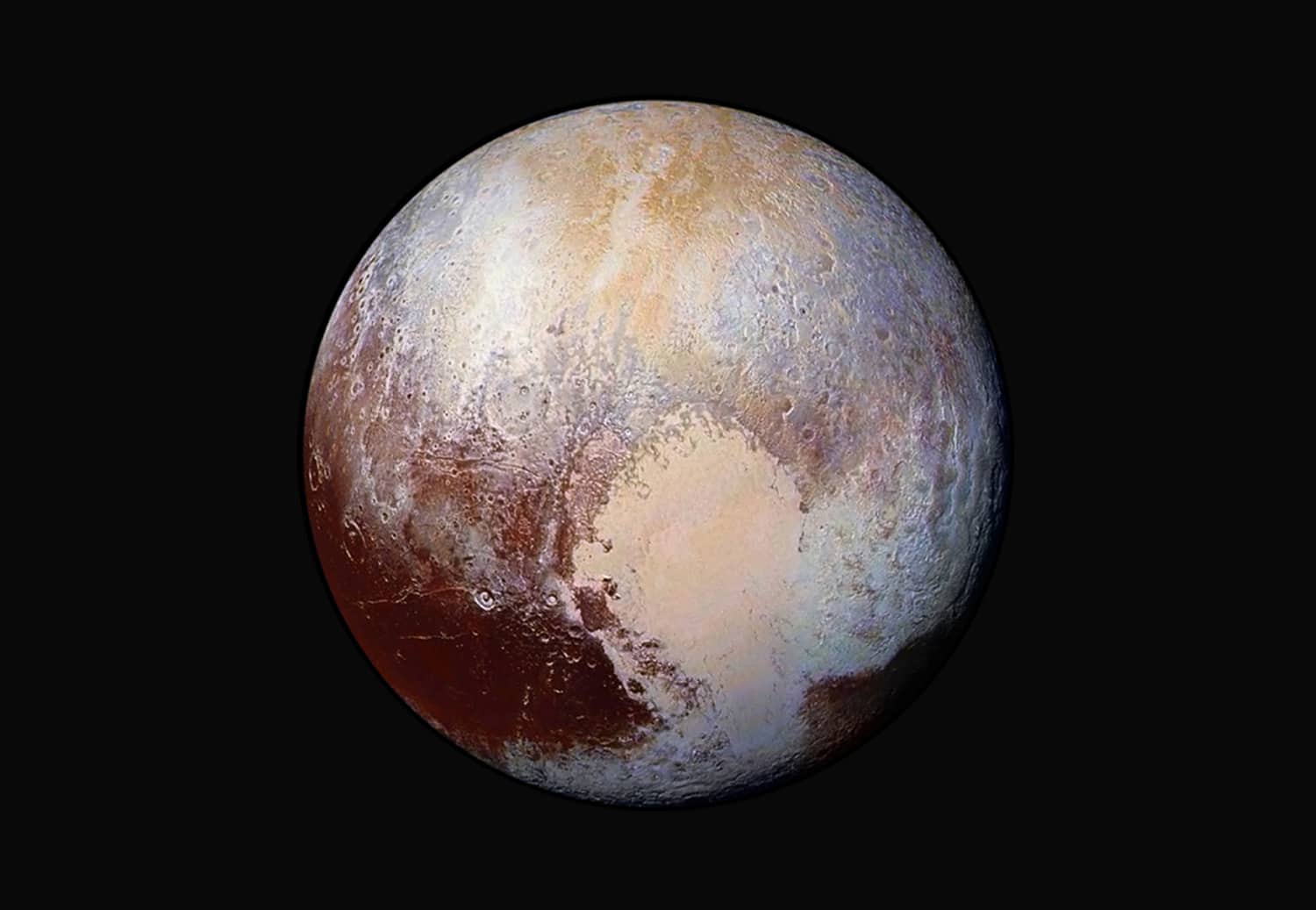WASHINGTON — Flowing nitrogen ice glaciers have been glimpsed on the surface of Pluto, along with an unexpectedly thick layer of haze in the atmosphere, NASA scientists said Friday.
The latest discoveries are from the flyby earlier this month of New Horizons, an unmanned probe that is revealing unprecedented views of the distant dwarf planet as a complex, active world.
“With flowing ices, exotic surface chemistry, mountain ranges, and vast haze, Pluto is showing a diversity of planetary geology that is truly thrilling,” said John Grunsfeld, NASA associate administrator for the Science Mission Directorate.
Scientists have been able to see closer images of the western half of the heart-shape — known as Tombaugh Regio — on Pluto’s surface, where ices appear to be moving and smoothing out the surface.
NASA said that in this area, informally named Sputnik Planum, “a sheet of ice clearly appears to have flowed — and may still be flowing — in a manner similar to glaciers on Earth.”
“We’ve only seen surfaces like this on active worlds like Earth and Mars,” said mission co-investigator John Spencer.
The ices in that region are made of nitrogen, carbon monoxide and methane.
“At Pluto’s temperatures of minus-390 degrees Fahrenheit, these ices can flow like a glacier,” said Bill McKinnon, deputy leader of the New Horizons Geology, Geophysics and Imaging team at Washington University in St. Louis.
“In the southernmost region of the heart, adjacent to the dark equatorial region, it appears that ancient, heavily-cratered terrain has been invaded by much newer icy deposits.”
The New Horizons spacecraft has also captured hazes as high as 80 miles (130 kilometers) above Pluto’s surface.
“The hazes detected in this image are a key element in creating the complex hydrocarbon compounds that give Pluto’s surface its reddish hue,” said Michael Summers, New Horizons co-investigator at George Mason University in Fairfax, Virginia.
There are two distinct layers of haze — one about 50 miles (80 kilometers) above the surface and the other at an altitude of about 30 miles (50 kilometers).
“It really is a mystery,” Summers added.
Previously, scientists thought the temperature around Pluto would be too warm for hazes to form at altitudes higher than 20 miles (30 kilometers).
“We’re going to need some new ideas to figure out what’s going on,” said Summers.
On July 14, New Horizons, a nuclear powered spacecraft about the size of a baby grand piano, became the first spaceship to pass by Pluto.
It will continue to send data back to Earth until late next year.
The spacecraft is currently 7.6 million miles (12.2 million kilometers) beyond Pluto, healthy and flying deeper into the Kuiper Belt.







